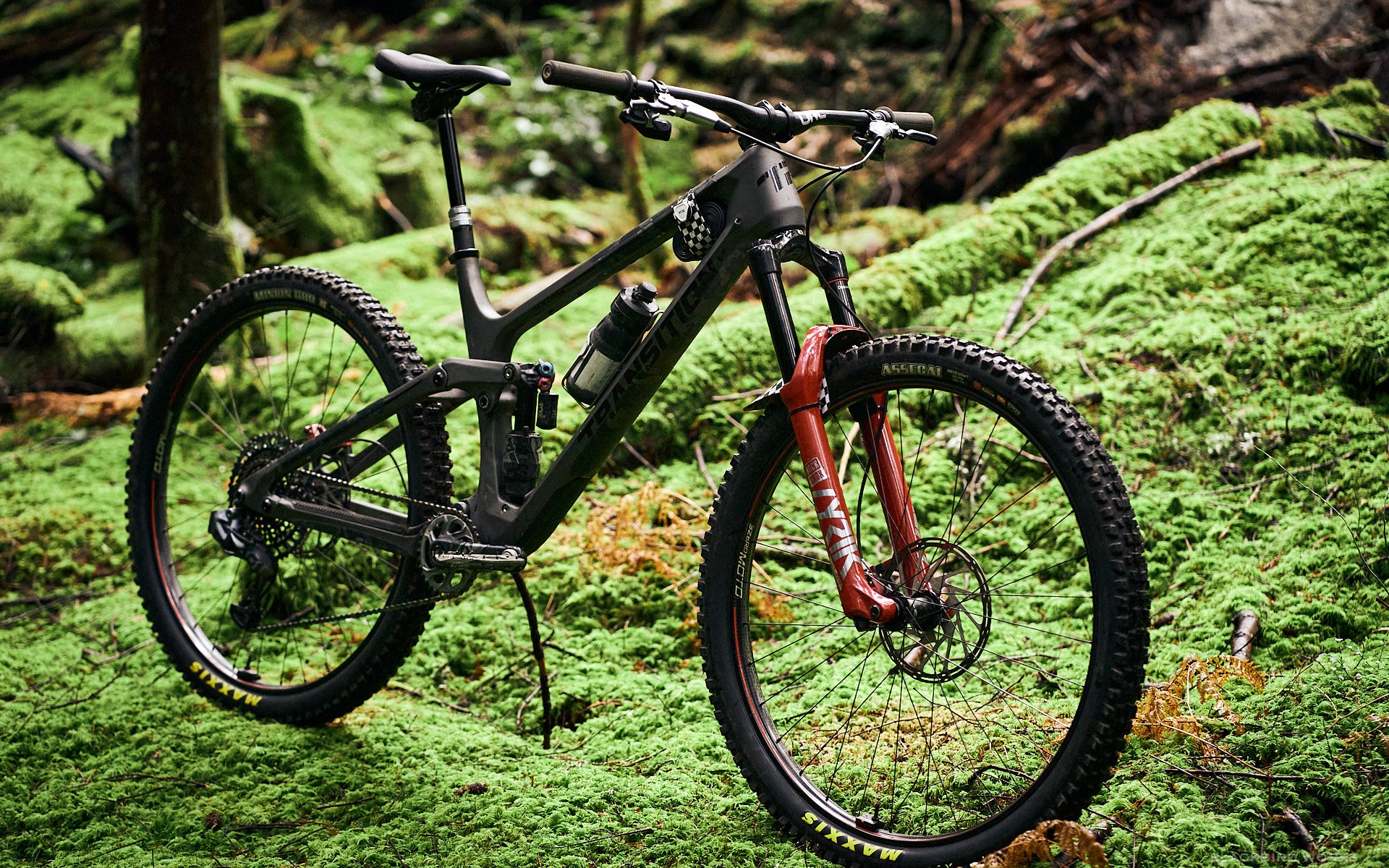
REVIEW
2021 Transition Sentinel Review
Since it was launched, the Transition Sentinel has been a bellwether for progressive trail bike geometry. The 2021 Sentinel is no exception, but in this case the trend indicates that trail bike geometry is stabilizing. I know this, because I went from the last generation Sentinel to this one, and even though I sized up from a Large to an XL, they're both clearly cut from the same cloth, and I have to say I'm a fan of the tailor.
I almost started this article off with a rant about shitty bike category labels but I trashed it because I don't think I can handle more cynicism this week. That aborted rant was probably rooted in the fact that the Transition Sentinel is either a trail bike or an enduro bike, depending on who you ask, and I think that either label is insufficient. First, because the Sentinel easily fulfills both of those categories, and second, because there is a disturbing lack of creativity in the language used to communicate all things about mountain bikes, and we can do better than describing everything as being 'fire' or using the phrase 'send it' every time we drop in (damnit). I wish we didn't need labels, but they're useful, so I'll play along and maybe write well enough one day to find the words without relying on labels so much.
At the beginning of this little experiment, the Transition Sentinel was intended to be a test bed for a bunch of SRAM products: AXS Eagle shifting, AXS Reverb Dropper post, and Zipp 3Moto carbon wheels. I loved the first iteration, but the new frame in an XL with 10mm more travel front and back made it even more suitable for the way I like to ride on the Shore: it is more stable at speed, more confidence-inspiring in the steeps, and it pedals as well as its predecessor. In general the new Sentinel is simply a fine-tuned version of the last one, and that's very good news indeed for Sentinel fans or those looking for a new 150mm bike that sheds singular labels.
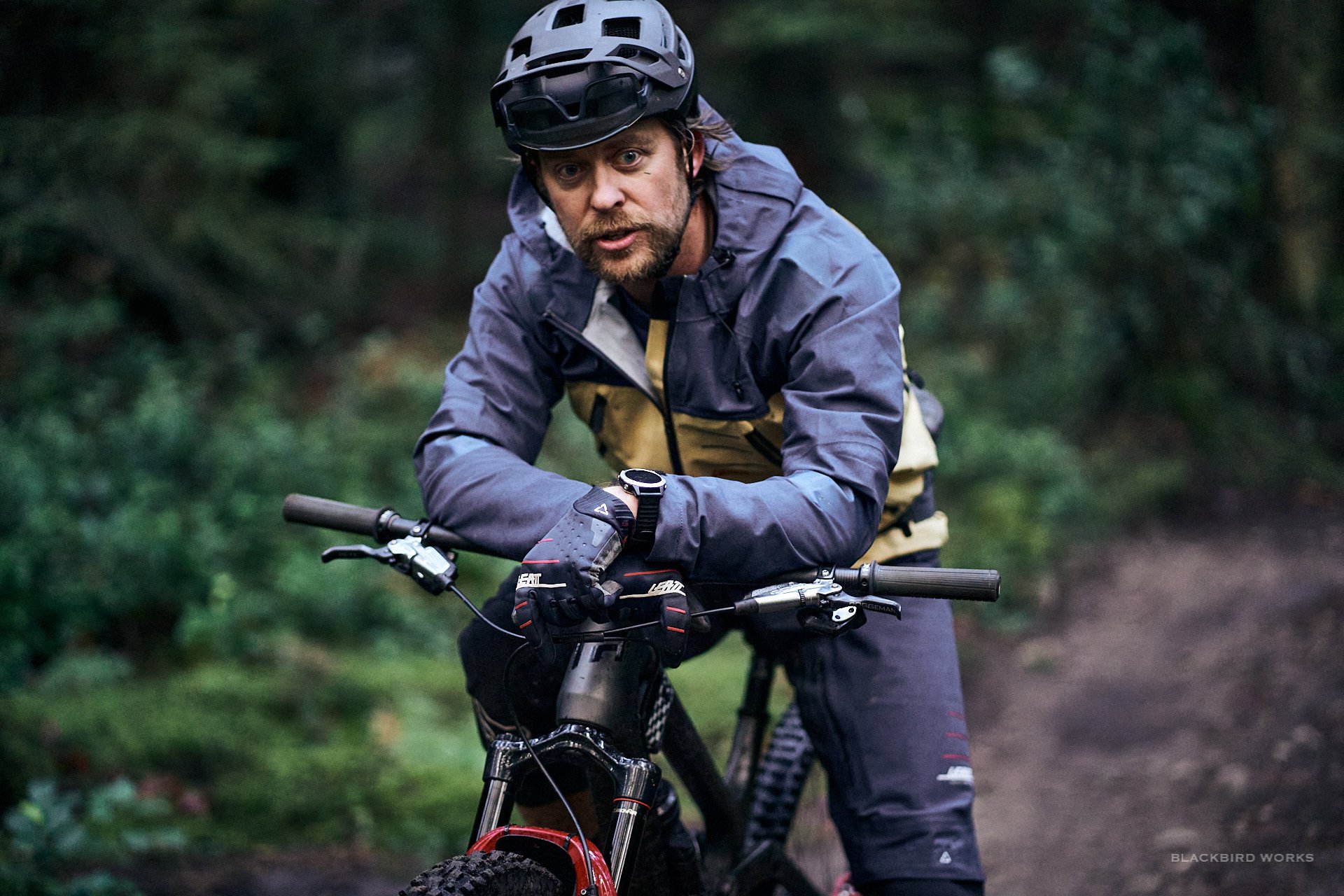
I'm not going to lecture you about labels.
There haven't been too many bike releases in the last few years that didn't involve changes to everyone's favourite triumvirate (longer, lower, slacker) but the latest Sentinel built upon a blueprint that was already snooping around for the limit. A quick glance at the geo charts of the 2019/20 Sentinel and that of the 2021 model shows some very modest tweaks - and only to certain sizes - for reach, whereas stack, seat tube angle, and head tube length all saw increases, albeit small ones. In most sizes effective top tube length actually got a tiny bit shorter. One other dimension saw changes, and that's wheelbase, which saw increases of 6-20mm, depending on frame size. So even as it seemed like Transition was slowing the pace of progression on the geometry front, they did add a bit more length to the rear center of the Sentinel, something we're seeing from other brands lately, too. It seems as though brands have two ways to figure out those limits: they'll either inch forward slowly, or at some point make a big step forward and rein it back in if they went too far. If they get it right or come close, it leaves them able to build on that big step with incremental improvements. Transition has been a geometry leader for some time, but Speed-Based Geometry (SBG) has been very successful for them, and anyone that's ridden one of their bikes in the last 3 years will be happy to tell you all about it.
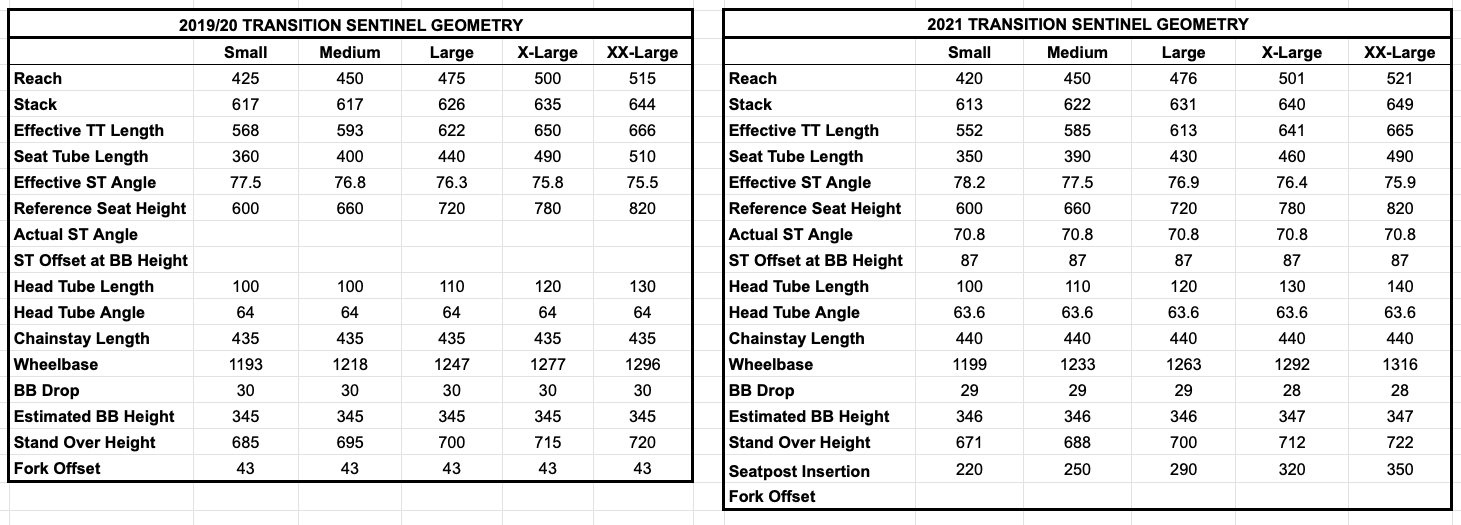
I think it's necessary to point out that over the last year I've spent most of my time on two bikes: this Transition Sentinel and a Specialized Enduro. I like to joke that I ride the Enduro on Mt Seymour and the Sentinel on Fromme, but it's a dumb joke because both bikes rule on both mountains, and because it's not very funny. The Enduro is a hype beast of a bike intended to maul the nastiest terrain you can manage, and I've been riding it far more often on the trails that test my limits. Truth told, the Sentinel does not have different intentions, but if the Enduro's pedigree flirts with DH bike territory, then the Sentinel leans into the 'trail bike' end of the spectrum, but only by comparison. Damnit, there are those labels again - maybe I'm the worst offender of all, or just a hypocrite. Anyway, that's not to say the Sentinel is less capable than the Enduro when it gets steep and rough, but 20mm of frame travel and 10mm up front* does make a difference and the Enduro feels more like a DH bike, which I find to be psychologically comforting. Mitigating factor: the XL Sentinel's wheelbase is longer than an S4 Enduro (1292 vs 1274mm). No one expects that - least of all me - but it's very apparent when I load the Sentinel on a rack or hang it from a hook, not to mention on the trail. It's the longest bike I've ever ridden but it doesn't feel like it.
The Enduro is an obvious crusher of steeps and gnar, but it's also what you expect as soon as you sit on it. The Sentinel is a bit more subtle until you turn up the volume, and then you realize it's just as bad ass, but it's also more fun than the Enduro in lower angle terrain (hence my 'Fromme bike' label). It doesn't require as much speed to come alive, and despite the longer wheelbase, I found it to be slightly more agile. We're all learning that a longer rear center doesn't mean a bike will be a boat, it might simply mean more balance. You have to be aware that that rear wheel is in a slightly different place than you expect at slow speeds (up or down), but once you grow accustomed to the wider gulf between too far back and too far forward, it actually gives you the chance to experiment with different balance points and that lends itself to plowing or punching, depending on what you feel like or what the terrain gives you. If the Enduro is a brutal hammer that encourages you to bash in a nail with one perfect stroke, the Sentinel reminds you that a hammer also has a claw, so you can pull the nail out and hit it again.
*The new Sentinel was designed around a 160mm fork, but you can run a 170 - I've yet to try it but will do so and report back.
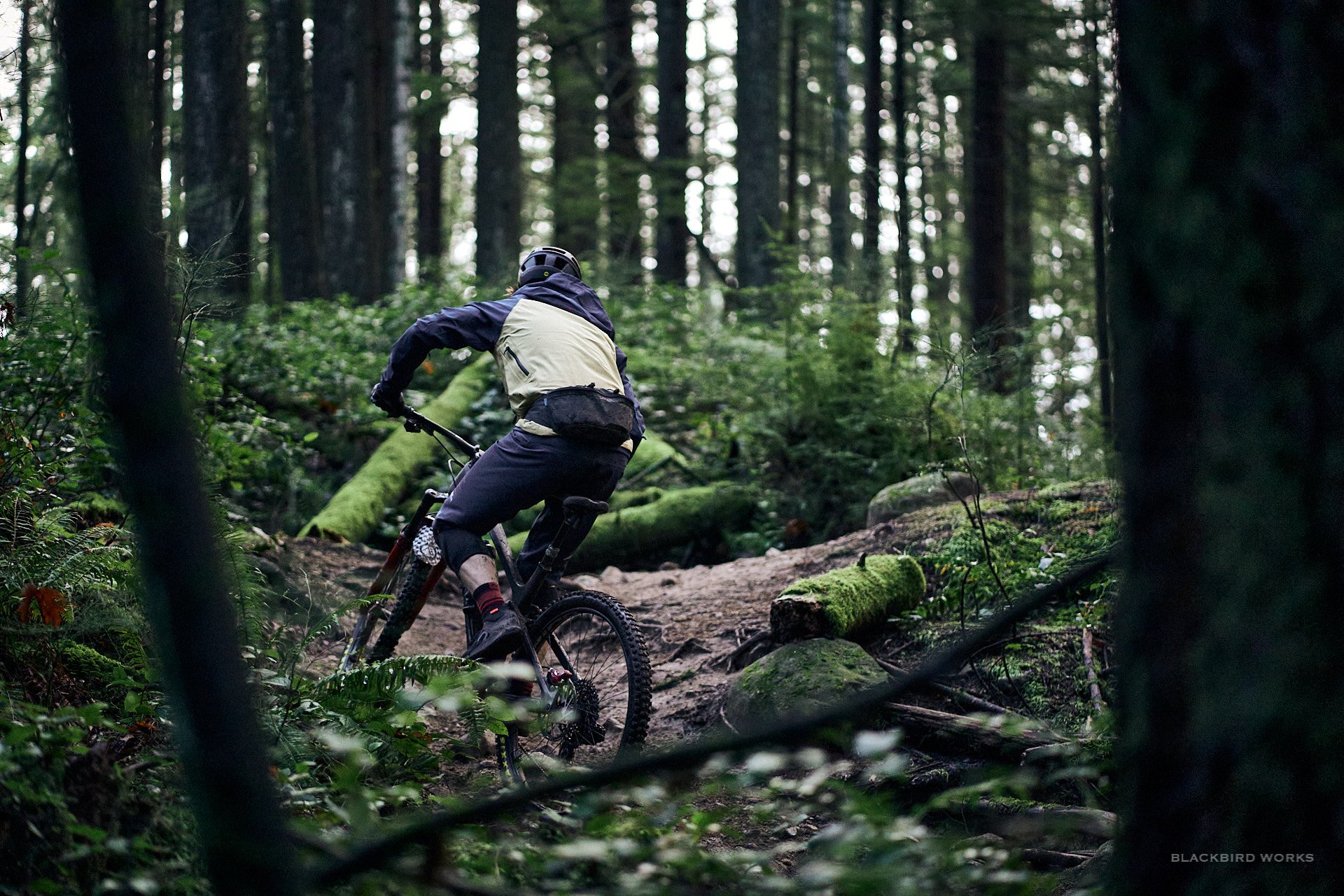
The Sentinel's long wheelbase doesn't hold it back when you need to maneuver, whether you're crawling up switchbacks or slithering down through tight s-turns.
Riding Impressions - Pedaling and Climbing
You either are going to really care about how fast a bike climbs, or you aren't - I think there are more shades of grey for downhill performance. It's easier to improve your ability to climb on any bike by simply declaring war on gravity: you can either get fitter or lighter. Of course anyone can acquire new skills and learn to be quicker on the way down, but the path to downhill dominance is not as linear - it's tied more closely to a variety of factors including confidence. Feel free to disagree, but I'm happy to hurt a bit on the climb if I know the descent will make it worthwhile, and my bias towards the trails and bikes I enjoy most reflects that philosophy. That doesn't mean I'm content to suffer on a tank, just that it's easier to relax that standard rather than the other one. Thankfully the Sentinel pedals and climbs very well, it's just that I wouldn't like it any less if it didn't, because of what I'll write in the next section about how it descends.
All that isn't very illuminating, though, if you're trying to decide whether to short list this bike. Looking at the numbers, you might think it rides 'big' for me at 6'1 (185 cms) with short-ish legs and a long torso, however it feels anything but big. Perhaps it's the long rear center combined with the steep seat tube, but the XL Sentinel fits me the way you'd want a bike to fit if you had to spend 8 hours a day on it. No funky weight distribution, unexpected pressure points on hands or butt, or undue amount of time to get used to it - with one exception. For the first few rides, I found myself working harder to figure out traction on the rear wheel. I was a bit far forward to keep the front wheel weighted, which would rob the rear wheel of traction in technical sections or steep climbs. That sorted itself out naturally after a short acclimation period, but it was a new sensation, especially with the current crop of bikes that force you to get weight over the front wheel or suffer a floppy front end.
Due to the combination of my leg length and height, I found the STA to be just right for me and finding a solid pedaling position. This played itself out in technical or steep climbs as well as sedate ones and it's not always that a bike works for me equally well in both scenarios.
As much as I appreciated being able to firm up the Fox Float X2 on long or non-technical climbs, in many cases the extra traction afforded by leaving it open was preferable, especially since it didn't seem to punish my efficiency. Whether going up or down the Sentinel is pleasingly progressive but stops short of plush. Whatever a 150mm bike is 'supposed to' feel like, this felt like it: one gooey notch short of languid, in favour of supportive and responsive.
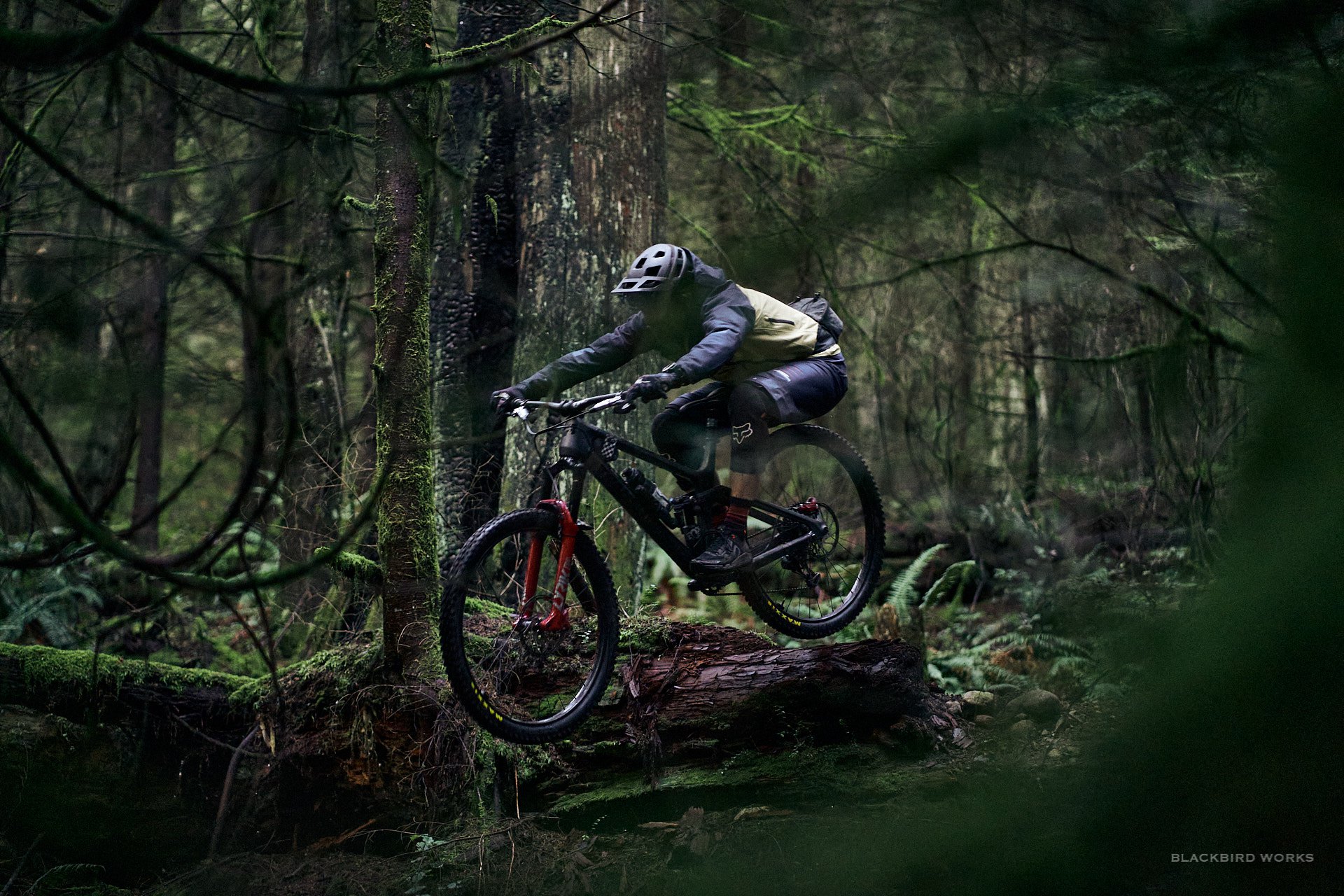
It's not a large drop, but the setup for this one had me feeling a bit awkward. Then I had a 'screw it' moment and bent the bike to my feeble will (some would say the bike just cajoled me into it).
Descending
Wherever the line is for you between an emphasis on pedaling or partying, the Sentinel sits well within the latter's purview. That long wheelbase and slack head tube angle absolutely require a bit of pace to activate, but I didn't feel like I had to be going 'fast' to wring some fun out of it. I may have used the word balance already, but it's striking how much the elongated chain stays meant that the Sentinel felt settled and consistent to maneuver rather than board-like. It is neither snappy nor sluggish, but rather encourages meaningful inputs; under a firm hand it will hold the line you point it down without fuss.
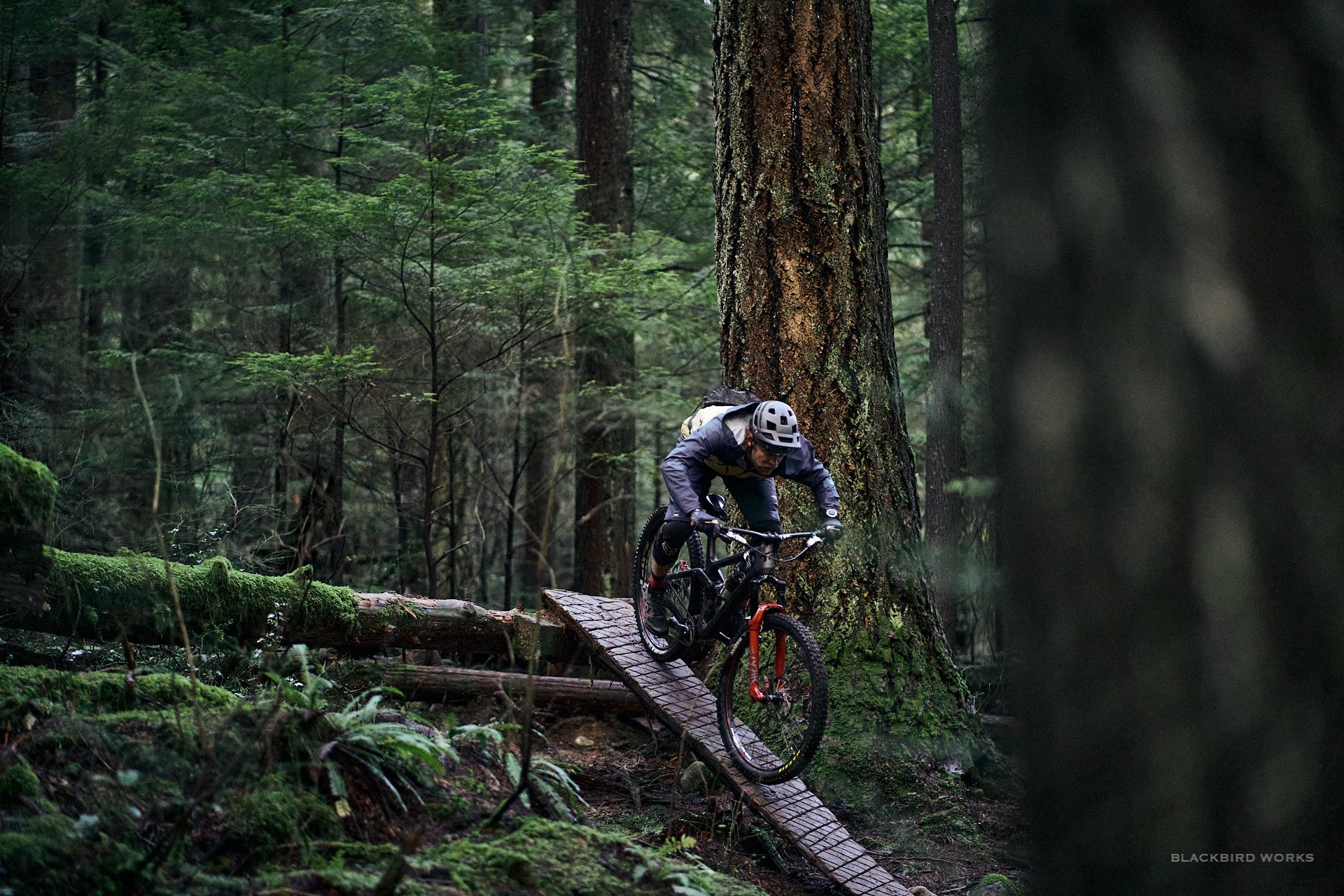
There is an awkward turn on the way into this down ramp - it's a perfect place to see how close the rear wheel gets to the inner apex with that long wheelbase.
Maybe some prefer the personality of a long front end and snappy chain stays - something like a mistreated mustang with mean streak - but I'm more wheels down than reach for the sky, so I am totally smitten with the Sentinel's generous helpings of traction and stability. Of course I get the wheels in the air occasionally - always altogether too briefly - and whenever I do, the Sentinel's pleasant aerial manners turn it into a "See? we got this" moment. The other told you so moments always came midway down steep chutes or in the middle of off-camber nasties, when letting the bike roll with the benefit of a little faith always resulted in arriving at the bottom with much less drama than my inner demons let me imagine. This just encourages bad behaviour, and then you're reminded that the folks at Transition all know how to dance on two wheels, so it's no wonder this thing is such a good date to bring to a trail party.
Any time I have found myself aboard the Sentinel in a section that tests my ability, it's been easily up to the task. The traction and stability I already mentioned are welcome when the trail tips downward, and in flatter sections they translate into more confidence at speed. There is a crispness to the way it handles big hits, which you can chalk up to its progressive nature, but the end of the stroke comes on like firmly applied pressure, rather than having any kind of plateau in the curve and ramping up quickly. It's a smooth progression that suits the bike's overall demeanor, which I'd call calming rather than frenetic.
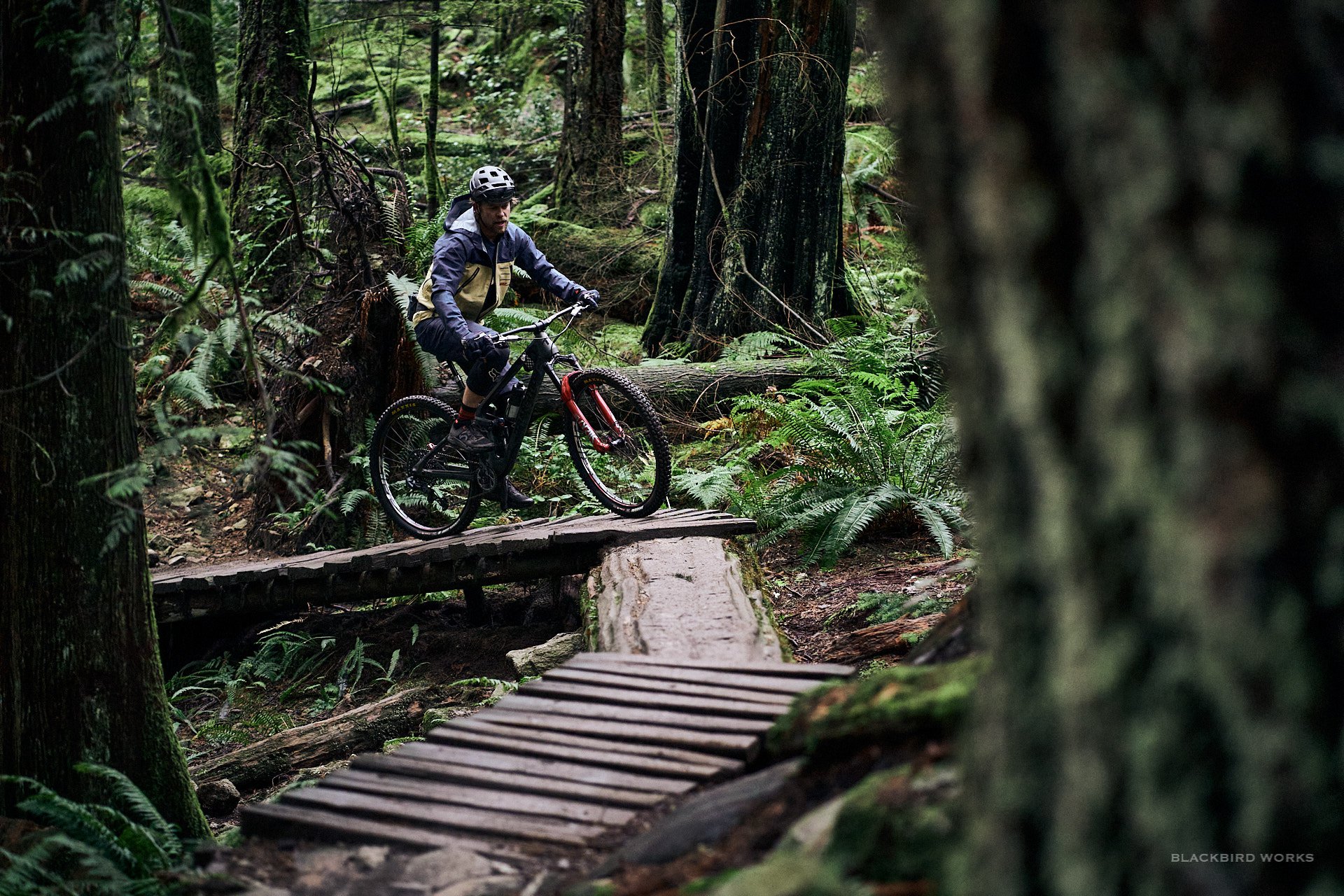
Other notes
I've been doing some wheel and tire swapping lately, and it's given me a good chance to figure out some reference points. On the Sentinel, I swapped between two wheel/tire combinations: combo #1 was the Zipp 3ZERO MOTO carbon 29 wheels with Maxxis Assegai up front and DHR II in the back (both EXO+ casing and MaxxTerra compound), and combo #2 was the Enve AM30 wheels with WTB Verdict front tire and Judge in the rear (TCS Light/High Grip for the front and Tough/High Grip out back). In our fall and winter conditions the Assegai in MaxxTerra finds its limit on wet days and will break loose easily from slimy rock, where the Verdict in High Grip offers more hold (so does the new Specialized Butcher). An Assegai MaxxGrip I'm running on a different wheel is top of the heap for grip when the riding surface glistens with moisture. Even so, with a front end that isn't sporting best-in-class grip, I find the Sentinel's stable nature lets you be prepared for a bit of excitement and deal with it without too much fuss.
I'll deal with the Zipp wheels more in depth in a separate article, but I believe they contributed to me realizing that this new Sentinel is a stiffer chassis than the previous one. On occasion the last gen Sentinel would feel a bit squirrelly out back under hard loads in a corner, and I haven't had a single moment like that on the new one. Whether the longer wheelbase changed the way the wheel loads is also a question - keep in mind the wheelbase on the previous bike in L was 1247mm to the 1292 of the XL on the current bike - that's a huge difference that would account for some different feeling forces at play.
The Enve AM30 wheels are a tad firmer than the Zipps, but by no means stiff. They're the nicest Enves I've ridden in terms of feel. Hard to say if the 'ankle' flex design built into the single-walled Zipp rims provides more traction or not, but I'd say that's a testament to how well the Enves ride. Both wheel sets are terrific.
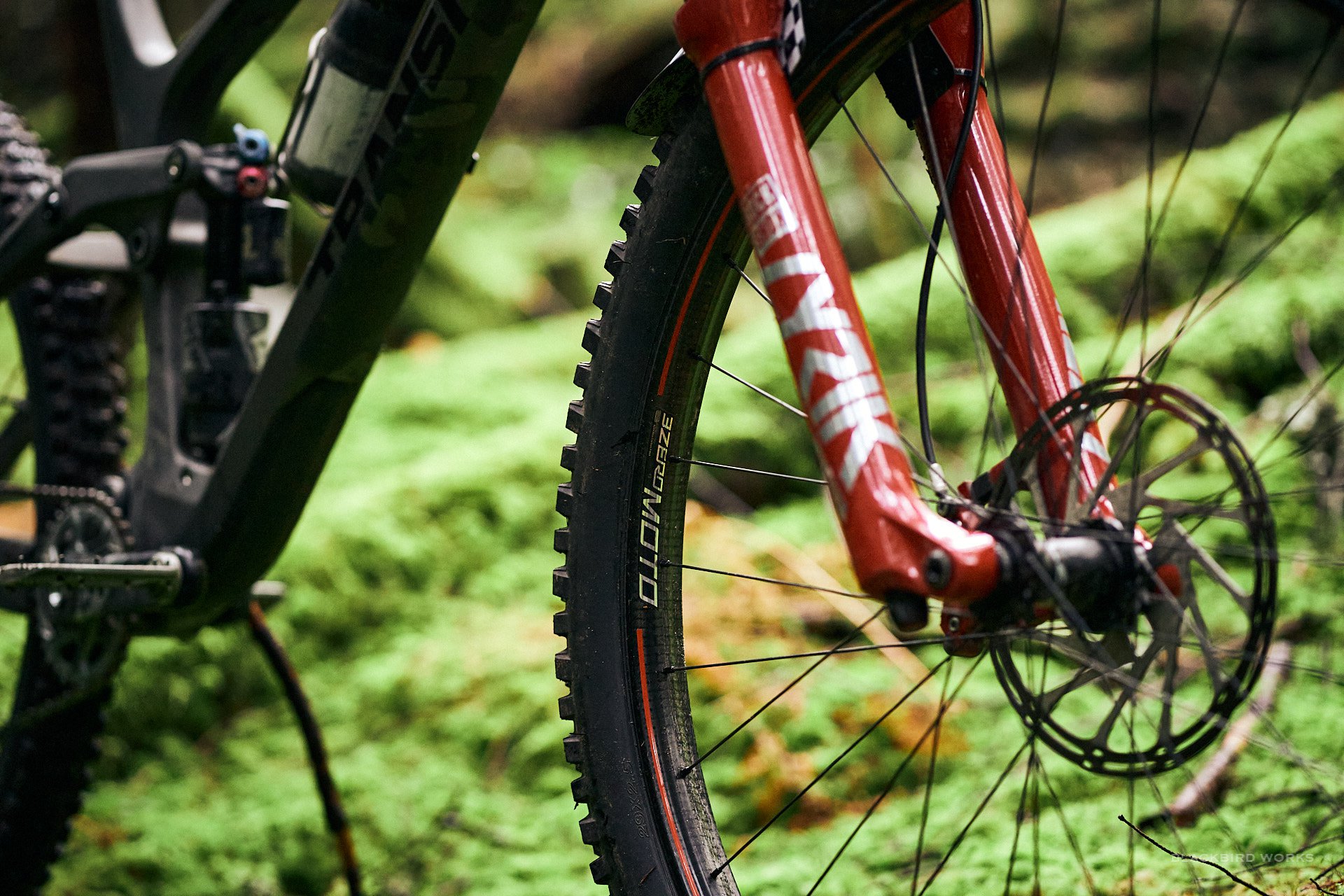
The Zipp 3MOTO wheels feel great and deliver lots of traction.

They also come with Quarq TyreWiz. At a glance tire pressure monitoring is a luxury you get used to quickly.
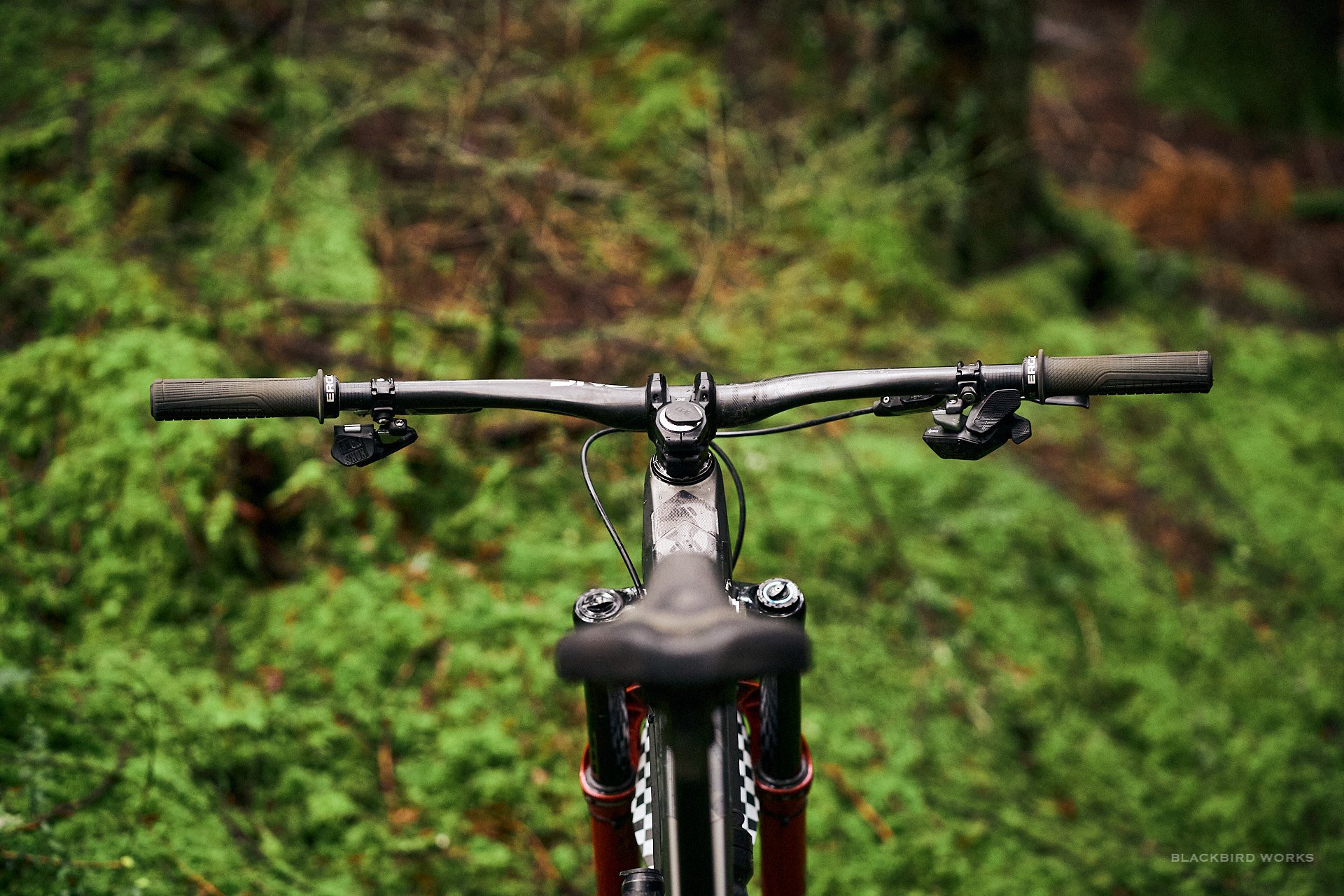
I know at least one reader who might get twitchy when they see this.
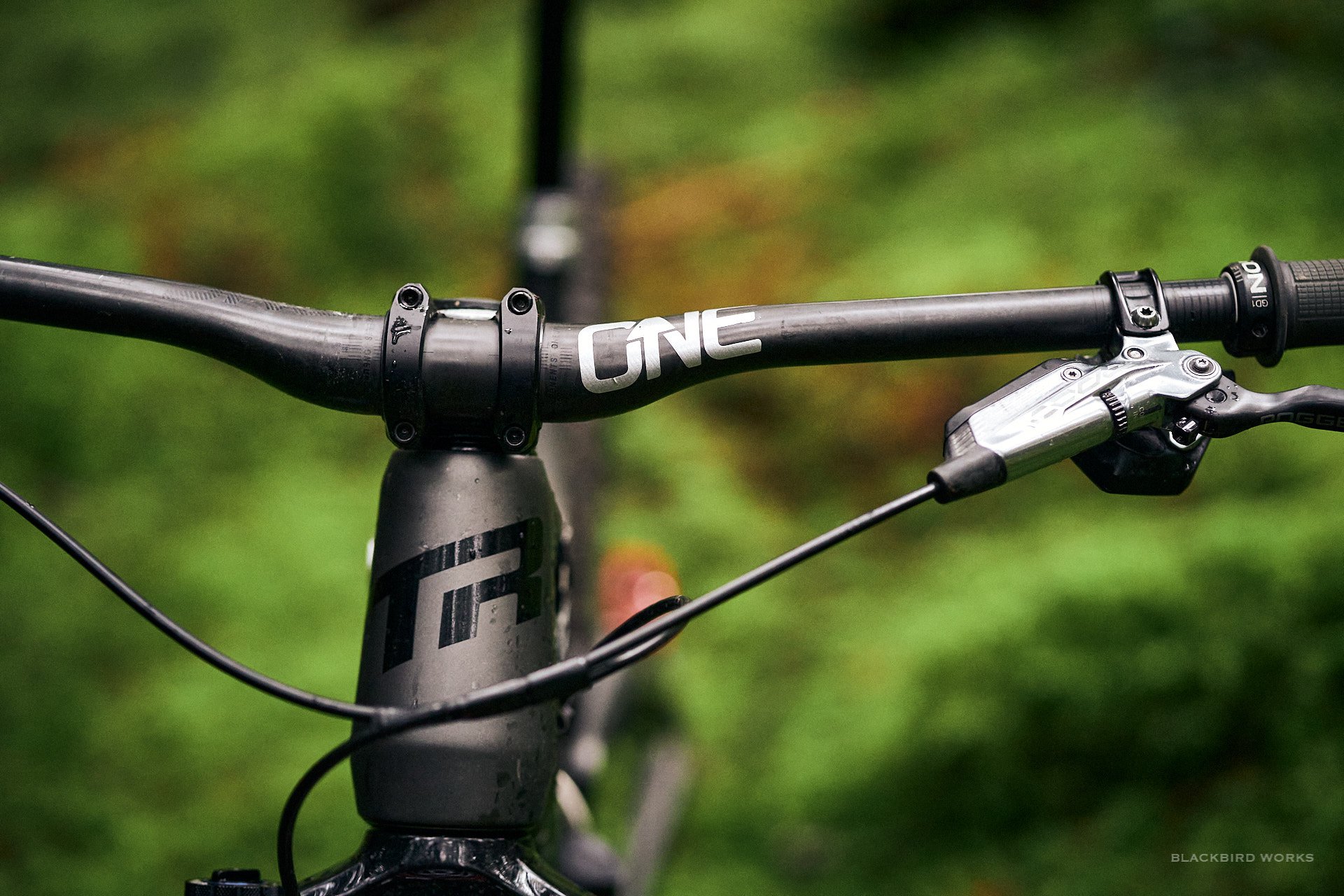
OneUp's carbon bar is my favourite.
In 2020 Transition rolled out a revised warranty policy, and now all bikes from model year 2020 and on are covered for the lifetime of the frame. They also have a crash replacement policy that covers not only the original owner but secondhand owners as well. The bottom line is that they want riders to feel like they've got your back, so if you ride one of their bikes, they'll do everything they can to keep you rolling, even if your problem isn't covered by warranty. More and more manufacturers are improving the durability of their carbon designs and rolling out longer policies, but Transition's is worded in a way that lets you read between the lines of mandatory legalese and understand that they called it 'We've Got Your Back' for a reason.
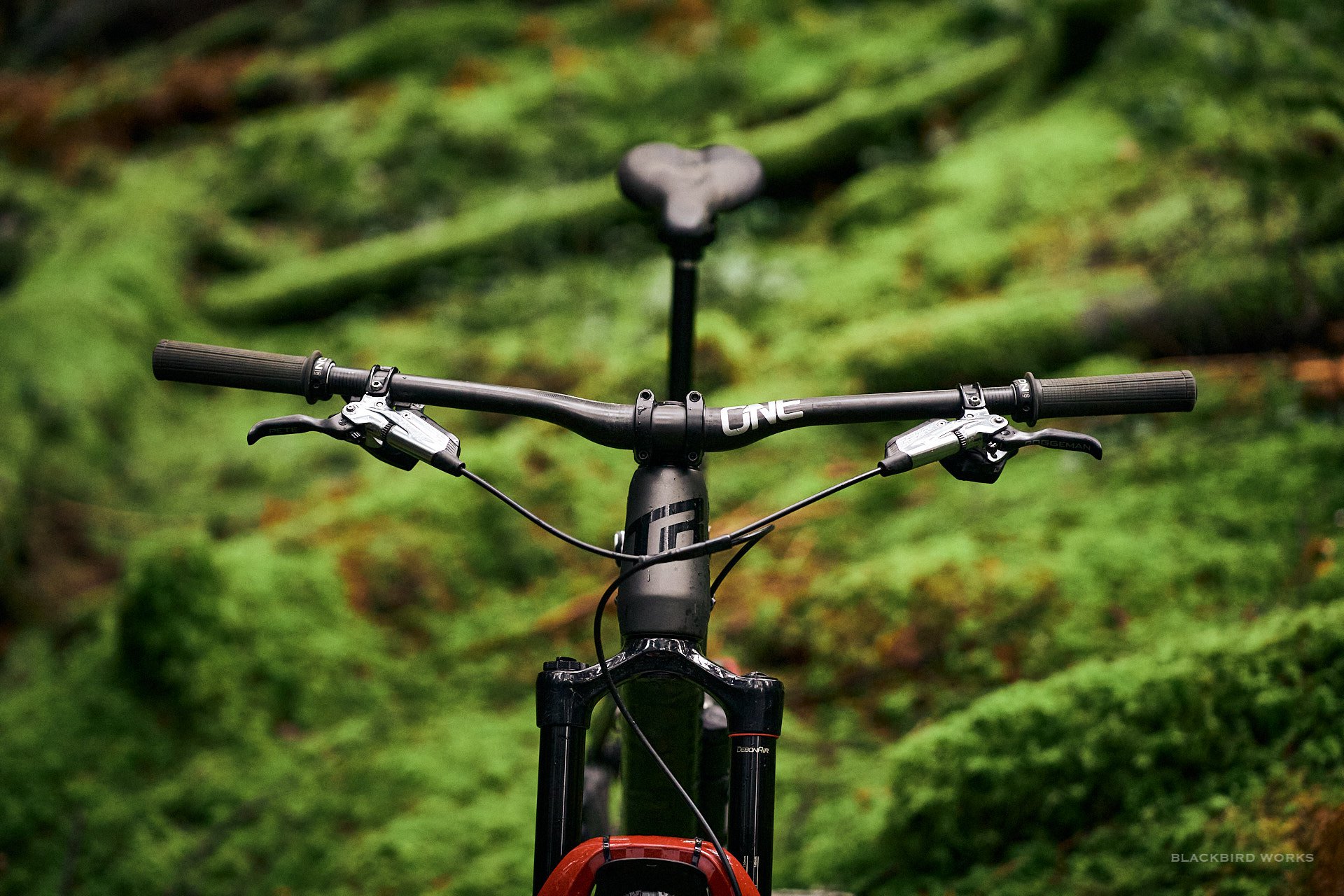
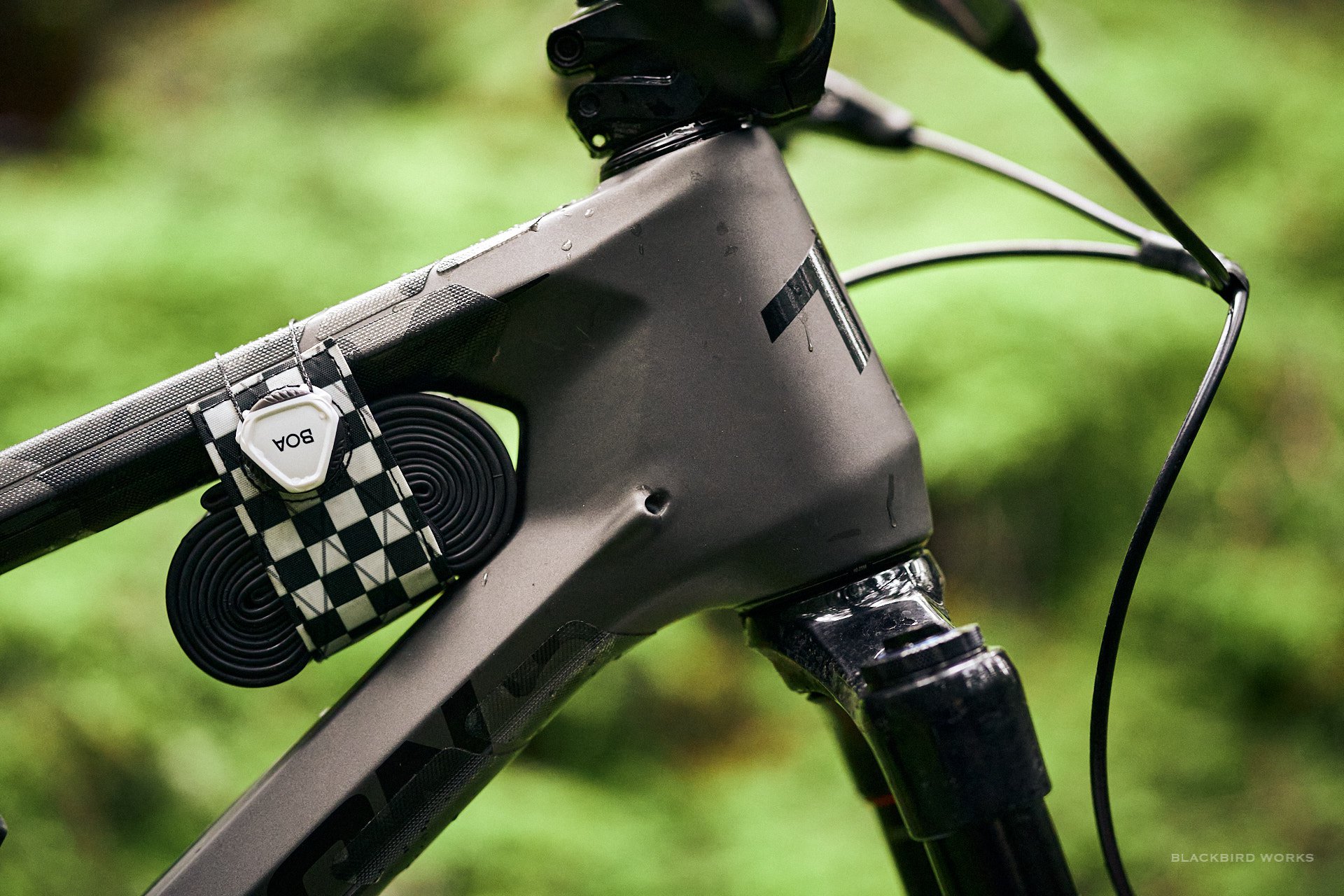
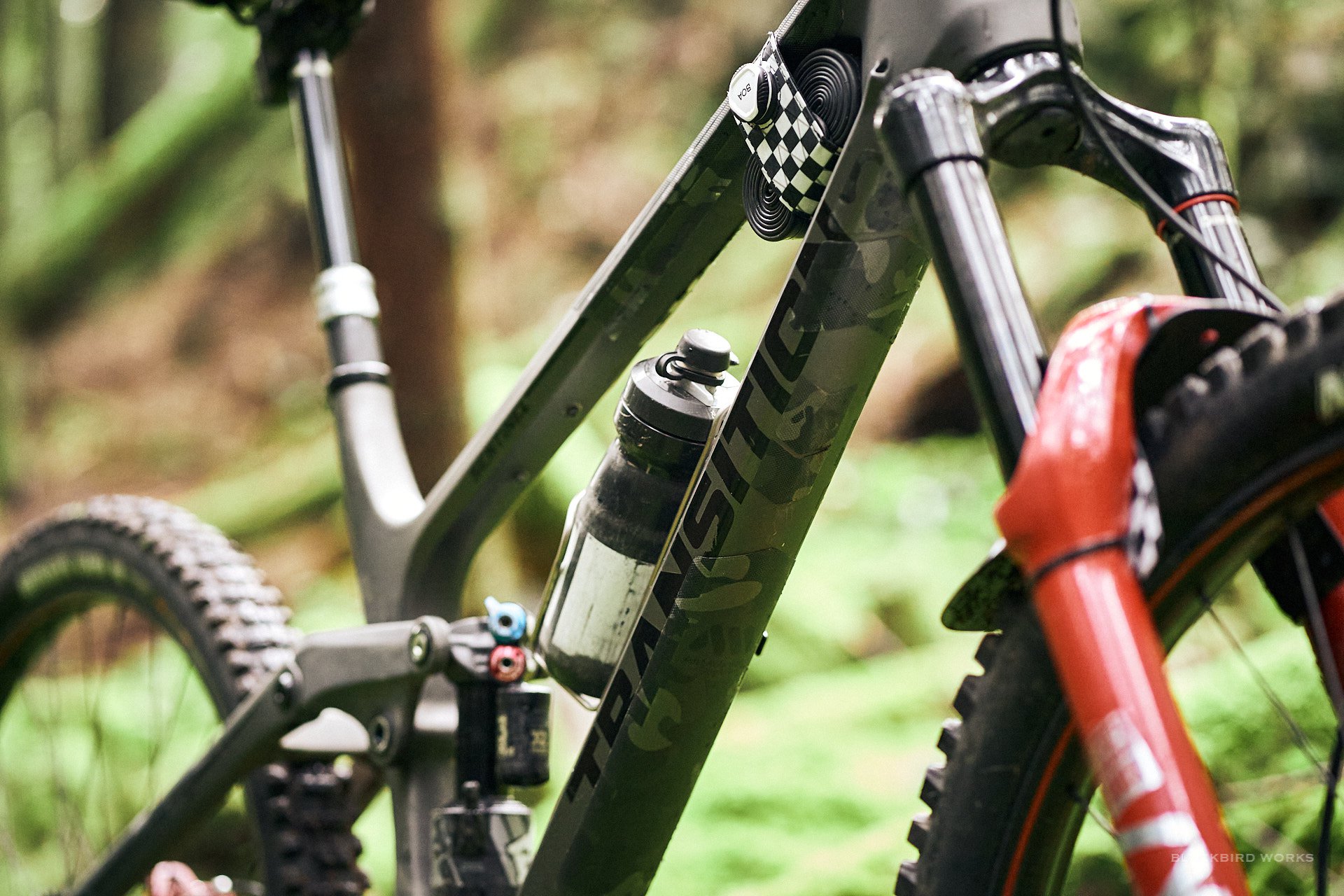
Transition Sentinel Test Bike Specs
Because this is more about the frame than the parts - and it's a one-off build - I'm not going to dissect every piece of the bike. There are some more articles to follow (long-term on the Enve AM30 and Zipp wheels) but there won't be any surprises from the build you see below. I will point out that the OneUp carbon bar is the nicest I've ever used. The vibration damping properties are subtle but apparent if you try it back to back with something else.
- FRAME - Transition Sentinel Carbon 150mm travel (can be run at 140mm with a shorter stroke shock)
- REAR SHOCK - Fox Float X2 Performance Elite
- FORK - RockShox Lyrik Ultimate 160mm Travel/42mm Offset
- HEADSET - Cane Creek 40 Series
- STEM - OneUp EDC stem, 35mm
- HANDLEBAR - OneUp Carbon Bar (800mm)
- GRIPS - Ergon GE1
- SADDLE - WTB Koda
- SEATPOST - RockShox AXS Reverb 175mm (note dropper sizes on Transition builds: S: 150mm, M: 180mm, LG/XL/XXL: 210mm)
- BRAKES - SRAM Code RSC
- ROTORS - SRAM Centerline (200mm front and rear)
- SHIFTER - SRAM X01 Eagle AXS (w/ updated rocker paddle shifter)
- DERAILLEUR - SRAM X01 Eagle AXS
- CASSETTE - SRAM XG 1275 (10-52t)
- CHAIN - SRAM GX Eagle
- CRANK - SRAM X01 Eagle Carbon DUB (30t)
- WHEELSET #1: Zipp 3ZERO MOTO carbon 29 // #2 ENVE AM30 (i9 1/1 hubs)
- TIRE/FRONT #1: Maxxis Assegai 3C MaxxTerra EXO+ (29.5 x 2.5) // #2 WTB Verdict 29 x 2.5 TCS Light/High Grip + Slash Guard
- TIRE/REAR #1: Maxxis Minion DHRII 3C MaxxTerra EXO+ (29.5 x 2.4) // #2 WTB Judge 29 x 2.4 TCS Tough/High Grip
- WEIGHT: 14 kg // 31 lbs

It's easy to understand the obsession each of us have with finding the best bike for us - but that's a different animal than the one bike that can do it all trope, and you know what? We should be ok with that. In bikes and other things, I think we can all agree that life is full of compromises and it's ok to accept the fact that one bike is going to have strengths and weaknesses. This is not simply a trail bike, and it's not just an enduro bike. It's both for some, but neither for none. It's a Sentinel, and while some bikes spend a bit of time searching for an identity, that is not the case for Transition's longest-travel 29er. There are longer travel 29ers out there, and if outright downhill performance is the only thing you care about, they may be a better choice, but it depends on how you like your millimeters to work for you. The Sentinel was never outclassed by the terrain on the North Shore, including some very steep and nasty trails that are at the edge of my ability. If you prefer a bit more responsiveness in a smooth-riding package that won't hold you back and tends to shed singular labels, the Sentinel could be the choice for you. Just act fast if you see one on a shop floor, because they're completely sold out at Transition.com.
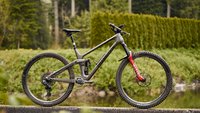









Comments
Onawalk
3 years, 3 months ago
Damn it Pete,
Damn it to you, the guys at Transition (which are absolute champions I might add, champions), Damn all of you! (Great article by the by)
Currently on a V1 Sentinel (with Cascade link) and I couldn’t be happier with the bike, but look on with lust at this, the updated version. I really wanted you to say that this bike wasn’t worth the time it took to reader the article.....but that was prolly never going to be the case.
Not in any rush to replace my current bike, thats for sure, and I’m confident if I hold out long enough Transition will update the alu version, as I just cant bring myself to spend on the carbon.
Side note, the guys at Transition are some of the most approachable, and helpful I’ve ever dealt with (along with Cascade Components) I’ve been involved with bikes for longer than I care to reveal, and while most people in the industry are helpful and down to earth, the Transition guys are a step above. Big shout out to them if they’re reading, keep doing what you’re doing!
Reply
Pete Roggeman
3 years, 3 months ago
Thanks, Ona. I haven't tried a Cascade link but it would be interesting sometime. I will say I loved the original Sentinel as well. Completely different personality, esp with a jump in size, but equally fun to ride.
And I certainly agree about the fine folks at Transition.
Reply
Vik Banerjee
3 years, 3 months ago
The bike looks nice. The one time I dealt with the Transition folks at a demo they were super nice. I'm sure I'll end up on a Transition one of these days. Giddy Up! ;-)
Reply
awesterner
3 years, 3 months ago
I’ve been riding my V1 for a while now with the cascade link. Really like the change. The first few rides had me frustrated though. It sat higher, and was incredibly compliant. It took a few rides to get the balance back with the fork. Very happy overall with the new 160/152mm setup. Pete mentioned stiffness of the rear triangle. With the OEM carbon rocker I noticed a little flex as well. I damaged it and transition replaced it with the aluminum one last year (at a 60gram weight penalty if anybody cares). I did noticed the rear triangle being more rigid. The Cascade link is a lot more substantial, the bike is noticeably stiffer. I thought I wouldn’t notice it between all three links, but it’s there :)
Reply
Moritz Haager
3 years, 3 months ago
Great review. I'd be curious on how your thoughts comparing this with the Norco Sight as they seem like very similar bikes. Knowing nothing else I'd be inclined to support a Canadian company first, though i have a real soft spot for Transition ever since they came in the scene with awesome product for fair prices back in the day.
Reply
Onawalk
3 years, 3 months ago
Soooo, new bike day for the wife recently, and she just scored a “new to her” 2020 Norco Sight A2, which couldn’t be more similar on paper to the Sentinel, but feels significantly different from the saddle. Both bikes are the same size, so looking forward to a comparison.
I have been a huge fan of Norco bikes, since I started riding these infernal contraptions, been the proud owner of original VPS-2, Norco Shore, (from the original, to the green tank of 2003), Norco 6 (which I still had until recently). I like this Sight, like it a lot......
If I’m honest, the Optic is incredibly tempting, and if I was in search of a new bike, thats likely the one (Cause you cant find a Spur anywhere)
But the guys at Transition are phenomenal to deal with, and I suggest anyone going to their home trails (once we can travel again) and visiting them
Reply
Geof Harries
3 years, 3 months ago
I wish more manufacturers would make a XXL like this, and not just in high-end carbon frames but aluminum. The 820mm seat reference height is what I ride at. No wonder so many XLs don't seem to fit that well, and make me look like a circus bear.
Reply
IslandLife
3 years, 3 months ago
That clean AXS cockpit has me drooling... but the oneup tool being slightly off really grinds my gears! Oh and... nice bike.
Reply
Merwinn
3 years, 3 months ago
Hopefully the rumours of a GX-level AXS will be true... not that I'll be upgrading any time soon from cables.
Reply
AndrewR
3 years, 3 months ago
@Merwinn I don't think that the price point will be worth the performance drop relative to what XO1 offers. It is the electronics and related mechanisms that are going to determine a good chunk of the retail price and there are not a lot of ways that SRAM can spec lower cost components, within the AXS part of the system, in order to deliver a reasonable price drop to the consumer.
Then there is also the question of why one would commit a chunk of expensive electronics to a mechanism that does not offer the same level of robustness and longevity.
There is nothing stopping anyone currently running a GX cassette with AXS but the logic dictates that if one can afford to buy AXS then the price difference between a GX and XO1 cassette is not really going to be a big stopping point.
The GX drive train is an excellent system but it just doesn't compete with XO1 for crispness of shifting and longevity.
I have met a lot of riders during my guiding who run GX (and I have run it myself for a year and I have just installed it on my wife's bike) and my upgrade recommendation is always start with installing the XO1 cassette and chain (for the crisper shifting and longevity and an XX1 chain if one really wants longevity) and then a XO1 shifter if the budget stretches that far.
I have been mocked in the past for stating this but the biggest real world monetary performance gain for the lowest spend is the upgrade to a lighter, stronger and longer lasting chain. There is no other part that moves so much where a small spend creates a 10% weight saving and the resulting force reduction (f=mv2) translates into lower wear and tear on the drivetrain.
Just watch a friend ride over something janky and then into a compression and watch the chain move if you need convincing.
The best performing for the dollar, XD drive based, mechanical Eagle system is: XO1 shifter, GX crankset with NX X-Sync II steel chain ring (and non boost for most riders living in steep terrain for better chain line in the lower/ bigger gears), XX1 chain, GX derailleur and XO1 cassette.
Product managers who spec GX shifters, cassettes and chain with XO1 derailleurs are just pandering to marketing whims. There is no appreciable performance increase or longevity gain for the dollar allocation.
Anyway slightly off topic there but I think GX AXS aspirants might be a little shocked at the price if and when it appears.
Reply
Merwinn
3 years, 3 months ago
Hopefully the rumours of a GX-level AXS will be true... not that I'll be upgrading any time soon from cables.
Reply
Znarf
3 years, 3 months ago
Very nice review and also great pictures! I'd love to try a V2 compared to my RAAW Madonna.
I'd love to know what "lifetime of the frame" means?
Is the frame intended to last for a certain amount of time? Or what actually defines the lifetime of a frame? My first own TV (bought in 2003) said on the first page of the manual that it had a life cycle of five years. I was SHOCKED when I read that. It was expensive and I bought it with the intent to keep it for at least 20 years. (then gave it to my dad a year later when I moved to university)
Reply
Vik Banerjee
3 years, 3 months ago
Almost all "lifetime" warranties are the service life of the product not the purchaser's lifetime or as long as you own it. Warranties are only for manufacturing defects in any case and those usually present themselves in the first few years of use so a "lifetime" warranty and a 3-5 year warranty are pretty much the same thing. A company would investigate how the bike was used and what the problem is as they determine if/how the warranty applies.
Warranties are really just a rough guide to what will happen if you have a post-sale problem. Nothing stops a company from providing free help post-warranty and in a lot of cases a company can deny a warranty if they really are not motivated to help a particular person.
I'm mostly interested in the type of company I am buying products from than the exact wording of their warranty. Being polite and having reasonable expectations I've never been denied help even when my issue was not, strictly speaking, covered by a warranty.
Reply
Znarf
3 years, 3 months ago
Thanks!
Reply
Sanesh Iyer
3 years, 3 months ago
More than one reader is bothered.
That shot of you pushing your bike all the way forward really shows the length of the bike. It looks like you're barely over the axle! Long bike.
Reply
[user profile deleted]
3 years, 3 months ago
This comment has been removed.
Cee Cee
3 years, 2 months ago
Reviewer ignores manufacture sizing scheme, uses a tiny stem, and then remarks that weighting the wheels is the one exception to 'no funky weight distribution.' 1292mm wb, 1850mm passenger, whatever could be the trouble.
Reply
Tim Coleman
3 years, 3 months ago
Looks like a really fun bike! Great read, and images are awesome!
Reply
Pete Roggeman
3 years, 3 months ago
Thanks Tim. Deniz did a great job with the photos as usual.
Reply
captainsl0w
3 years, 3 months ago
If I was to buy a new bike how would I decide between this and Stumpjumper EVO?
Reply
Trent Blucher
3 years, 3 months ago
I'm in that boat at the moment. Frames are practically the same price (at least in Aus). for the build levels I'm looking at, I like how Transition has prioritised the suspension and brakes over the drivetrain. But the Evo is crazy adjustable and has some very cool features.
Reply
WalrusRider
3 years, 3 months ago
I'm a big fan of the Transition Sentinel but the new Evo is probably going to be my next bike. The Stumpjumper Evo frame is a pound lighter. The geometry is massively adjustable. And the bike has the SWAT storage hole.
Reply
Jerry Willows
3 years, 3 months ago
EVO's are all sold out until at least August. Get what you can get.
Reply
AndrewR
3 years, 3 months ago
You really do run a wider spacing on your right brake compared to your left brake (inset futher from the end of the bar)! I noticed it in a previous article but wasn't convinced that it wasn't just camera angle. That would weird out my set up OCD but it doesn't seem to bother you.
Hand differences, injury, curious as to whether there is a conscious choice behind the set up?
The bike certainly looks clean with AXS.
Reply
Pete Roggeman
3 years, 3 months ago
You may know more about my setup peccadilloes than I do! To be honest, I set up the levers to be even by sight and by feel, but then, as everyone knows, over the course of the first few rides, you make small tweaks until it feels 'right'. Now, I won't say that a mm here or there would totally throw me off - I'm more about being within a specific range and then I can deal with it. Maybe there is an injury or biological asymmetry - I don't know for sure but it wouldn't shock me. Once upon a time I had a really, really talented and elite road bike fitter do a once over on my setup and it was asymmetrical everywhere, but that was due to a leg length difference that was playing havoc with my hips and I don't have those issues anymore...I've also got some past shoulder injuries that just maybe are at play even though they don't bother me.
Anyway, interesting to think about and I'll pay attention to it for future interest's sake.
Reply
Pete Roggeman
1 year, 10 months ago
Was just changing the grips on the Sentinel and remembered this comment. Did not measure the levers to be sure they're in the same spot, but once again did it by feel and it still works for me...although it turns out they're closer to even this time ;)
Reply
Maximum Radness
3 years, 3 months ago
I love NSMB’s varied flavors of writing. But yours is the mint chip of the bunch. I can tell you enjoyed the bike, but you’ve found a great expressive way of telling us why. Great effin review of a great bike.
Reply
Pete Roggeman
3 years, 3 months ago
Thanks, Max. If people learn something or are enlightened, that's great. Even better if you enjoyed a few words. Always appreciate the feedback.
Reply
Andy Eunson
3 years, 3 months ago
The “referenced seat height” in the geometry chart seems way too low. 600 mm for the small is I assume seat height from the centre of the bb? I run my seat height at 690 with a 175 crank. That 600 seems a little unlikely. As are the other referenced seat heights. So the effective seat tube angle is not as steep as they indicate. I’m looking at the Geo chart and thinking I’m between small and medium but I’m not so sure.
Reply
AndrewR
3 years, 3 months ago
@ Andy Eunson is you 690 from pedal to saddle or centre BB to saddle? Frame manufacturers use centre BB as that way the crank length is irrelevant.
My 5'9"/ 175 cm wife runs a seat height of 695 mm on a medium frame. This is centre BB to top of saddle (and forced to run a 125 mm dropper rather than 150 mm due to seat tube insert limitations and hitting that total length including seat post and saddle stack height - separate story).
I am 6'2"/ 188 cm and I am 795 mm centre BB to top of saddle.
800 mm for XL/ L; 700 mm for L/ M do seem to be appropriate saddle height estimates for determining dropper size choice and effective STA.
Most frame/ bike manufacturers seem to be referencing distance from centre BB to the top of the seat post as they cannot aim off for the wide variety in saddle stack heights (and saddle manufacturers should start to publish this)
Reply
Andy Eunson
3 years, 3 months ago
Yes 69 cm from bb to saddle. I’m about 5’4” ish. 31 inseam so I do have long legs. I can often fit a medium in older bike models but small for most newer models. I’m starting think my proportions are at the freakish end of the spectrum.
Reply
David Tran
2 years, 3 months ago
Hey Pete, any chance you test ridden a banshee titan? I'm tossed between the sentinel and the titan for my next bike.
Reply
Pete Roggeman
1 year, 11 months ago
Hi David,
I'm sorry, I haven't ridden a Titan. Have you made a decision yet?
Reply
David Tran
1 year, 11 months ago
Hey Pete, went with the sentinel alloy!
Reply
Please log in to leave a comment.